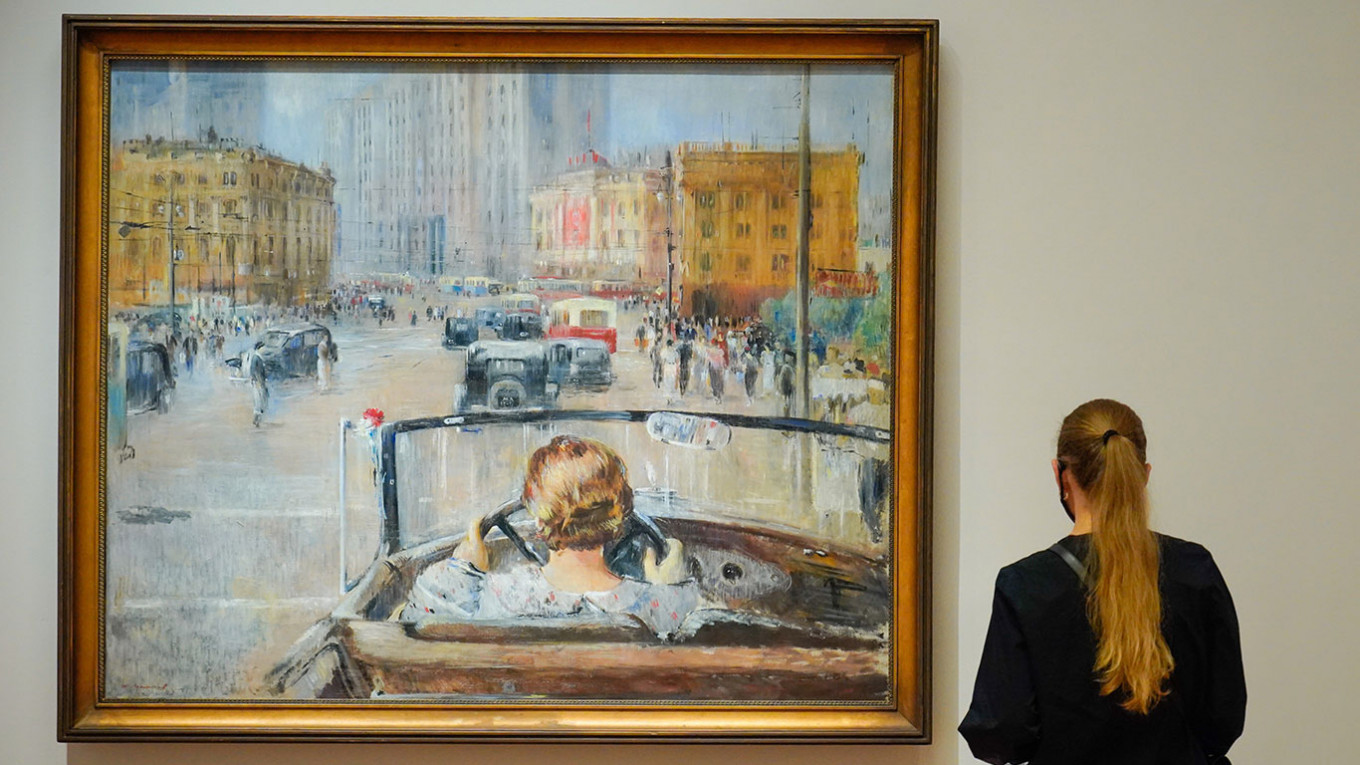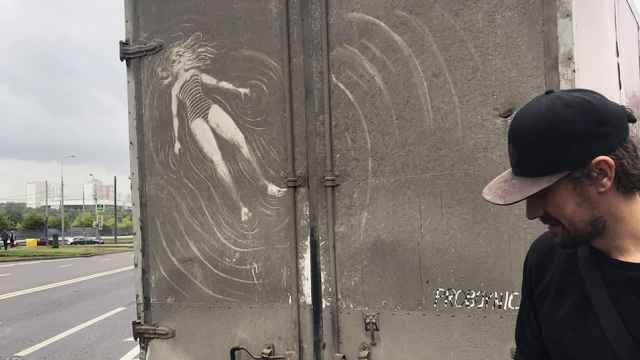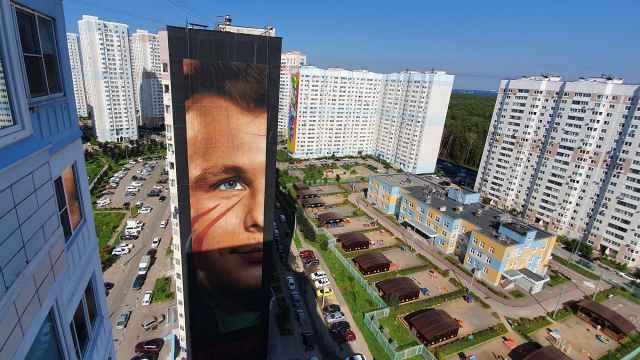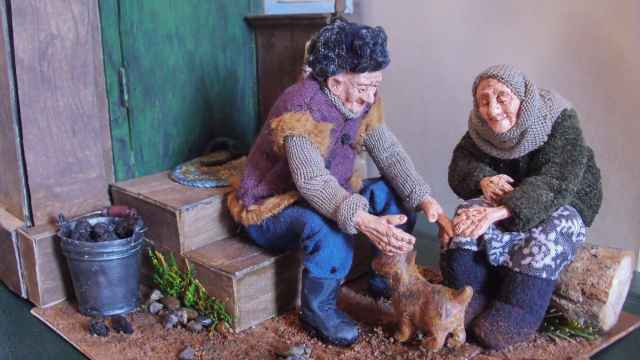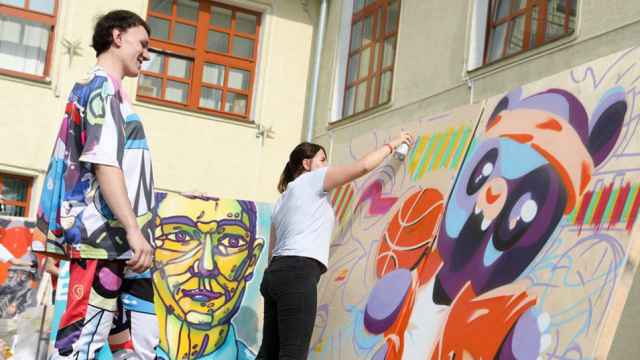The Tretyakov Gallery is holding the first solo exhibition of works by Yuri Pimenov (1903-1977), a retrospective that presents the legacy of one of the most significant Soviet artists of the 20th century. He is best known for his painting “New Moscow” which became a symbol of so-called “Stalinist glamor.” His depiction of a woman sitting with her back to viewers behind the wheel of a Soviet convertible as she drives along Okhotny Ryad close to the Bolshoi Theater is constantly reprinted as an illustration of life in the U.S.S.R. in the 1930s.
I recall visiting the New Tretyakov Gallery in the early 2000s with the artist Lisa Vershbow, wife of the US Ambassador Alexander Vershbow and Annette Shelby, wife of Senator Richard Shelby. As soon as they saw Pimenov’s painting, they both shouted “A convertible! A convertible!” Their delight was sincere, but for me the image of beautiful Moscow with a woman driving a convertible struck me as the fantasy of a rather unintelligent artist.

A legacy broken in two
The curators Yelena Voronovich and Nataliya Chernysheva (who did the theater section of the show) wanted to show the work of Pimenov is its entirety, beginning with the 1920s when he was a student at VHUTEMAS under Vladimir Favorsky. And they succeeded. Visitors are amazed at the difference between Pimenov’s early works and those he did in the 1960s or even the 1930s. Thanks to Yelena Voronovich the museum specialists were able to reconstruct several works that were thought to be lost, or rather, that the artist destroyed.
In 1924 Pimenov was part of the “Collective of Three” along with Alexander Deineka and Andrei Goncharov. But in the 1930s when the regime was battling “formalism” and Stalinist socialist realism dominated the arts, Pimenov changed dramatically.
As the curators noted, “The artist destroyed many important canvases that were celebrated in the 1920s. The drama of Pimenov was that he didn’t just completely rethink his own early work and reject his innovations in imagery and form. He wanted to erase them all from his biography and from the history of art. To do that, in the early 1930s Pimenov destroyed a number of paintings, even those that had already been purchased by various museums. He would arrange with museum workers to exchange their paintings for ones that fit the style of the times better.”
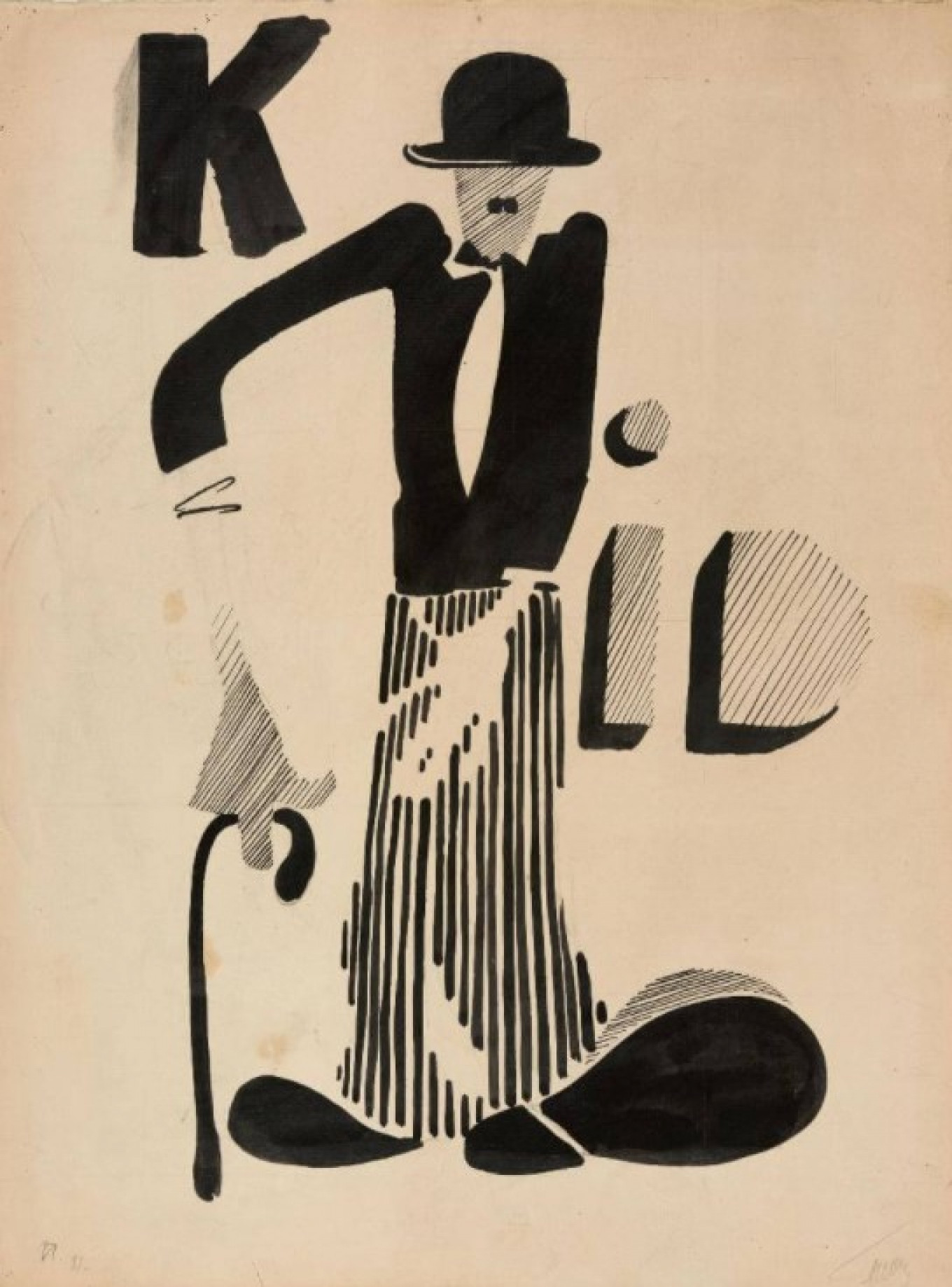
The artist destroyed dozens of his paintings, but the curators were able to recreate eight of them from metal plates. Reproductions of Pimenov’s works were often published in exhibition catalogs and magazines, and now visitors can see how bright and expressive his early works were.
Sometimes his graphic works are reminiscent of works by Alexander Deineka (the large female forms standing with their backs to the artist) and a few even recall the works of the German anti-war artist Otto Dix (his painting from 1926, “Disabled War Veterans” in the permanent collection of the Russian Museum in St. Petersburg). Indeed, an exhibition note reads that Pimenov “combined the sense of form of German expressionism with the life-affirming content of Soviet art.”
At the start of the exhibition the biographical notes state that in 1931 Pimenov suffered a psychological crisis and stopped working — the first time this has been acknowledged publicly. It marked a dramatic change in Pimenov’s style. He becomes an impressionist who worked in a rose-colored palette and painted optimistic canvases of lovely Moscow. (This is especially felt in his painting of 1932, “Rose Model.”) At the peak of the Great Purges, Pimenov, like his friend Deineka, appeared not to notice what was going on. They marched along with other regime supporters to the music of Isaak Dunayevsky, as if confirming Stalin’s words that “life has gotten better, life has gotten more fun.”
An important part of the exhibition is the recreation of one of Pimenov’s monumental works – the mural he did for one of the halls of the Soviet pavilion at the World Fair in New York in 1939. In this work, called “Physical Education Parade,” Pimenov has completely embraced the style required by the Stalinist era. His works of the war period are also quite interesting, although they are placed somewhat awkwardly and easy to miss.
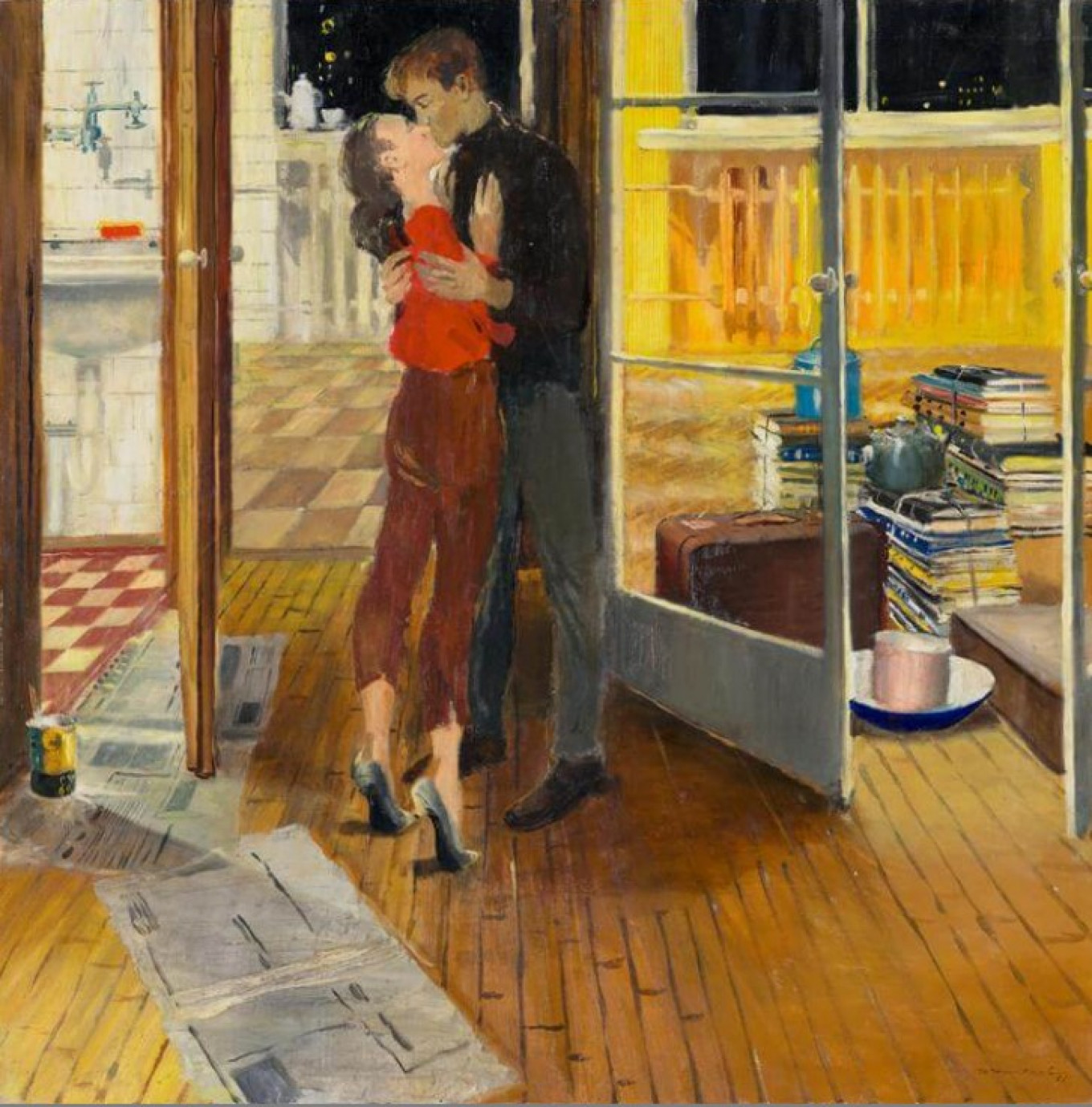
Pimenov’s lyrical Thaw
Pimenov has gone down in the history of Soviet art as one of the founders of trend called “lyrical Thaw.” These were works done in the late 1950s and early 1960s. The most famous painting is “Wedding on Tomorrow Street,” believed to be a depiction of the artist and his wife, or “Lyrical Housewarming” (1965) showing a Moscow couple frozen in a kiss. Another celebrated work is “Glass Plate” (1966) from his series “New Neighborhoods,” that depicts a young woman walking along the Sophia Embankment by the Kremlin carrying a pane of glass on her shoulder. In that same year, 1966, Pimenov signed a petition against the rehabilitation of Stalin prepared by science and arts professionals.
By Soviet standards, Pimenov traveled a great deal, and this was reflected in the paintings of his French series and in Japanese portraits. In the 1970s he had several exhibitions in Germany, Poland, Hungary and Japan, where he painted “Japanese Girl Kyoko” (1975). Pimenov’s daughter Tatiana wrote, “Thanks to the gallery of Madame Nikamura, who loved Russian art, [my father] had good relations with Japan. Many of his works were purchased there. They liked his works, and one collector even reconstructed part of the space where he planned to show the painting so that the light would fall on it better.”
Pimenov was enchanted by the world of theater. The exhibition includes both his sketches for theater sets and his well-known posters for films and plays. He seems to have loved to capture on canvas details of women’s clothing and was especially adept at painting elegant stockings and gloves. One of his most lovely canvases is “In the Ballerina’s Dressing Room.” Another is his portrait of the legendary Galina Ulanova. Pimenov designed many productions and taught at the Cinema Institute.
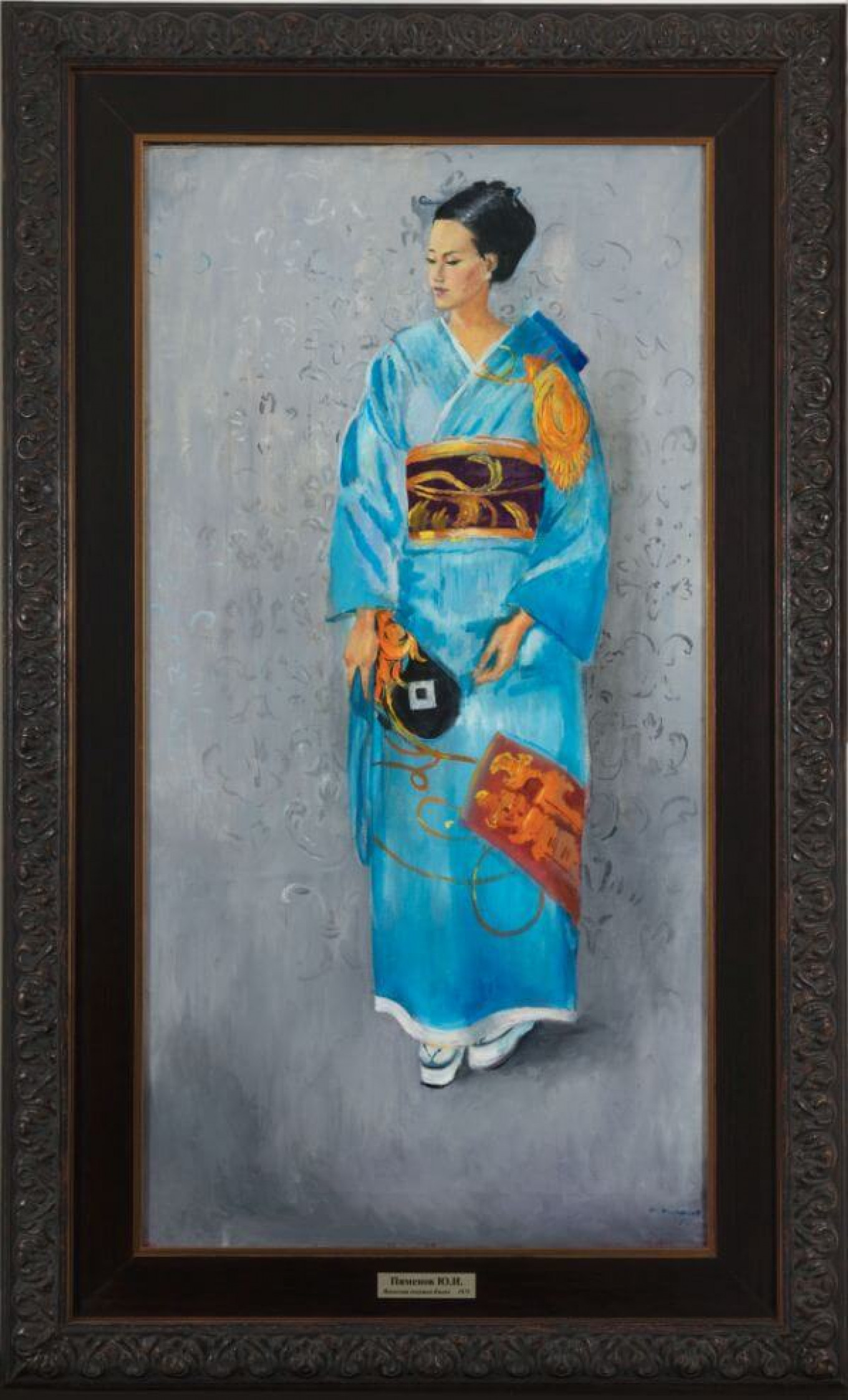
The portrait of actress Tatyana Samoilova, who was famous in the 1960s after playing Anna Karenina and the main role in “The Cranes Are Flying,” is one of the show’s masterpieces, although it is tucked into the far corner of the exhibition. In this decorative portrait Samoilova is wearing an enormous dress of crinoline that takes up most of the canvas; it is not formal, but very colorful. It is somewhat reminiscent of a portrait he did in the 1930s of Zinaida Raikh, the brutally murdered wife of Vsevolod Meyerhold. Pimenov had a tendency to repeat himself, like he did with the painting “The Roads of War,” which repeats the composition of his celebrated “New Moscow.”
A life of contradictions
At the end of his life Pimenov demonstrated the contradictions characteristic of the late Soviet era. On the one hand, he had several state prizes and even an Order of Lenin, and he was a People’s Artist of the U.S.S.R. On the other hand, he never joined the Communist Party, and when he died, his funeral was held in a church on Yakimanka.
Yuri Pimenov’s son, Vladimir, attended the opening and thanked the curators for their work. “I never thought that I’d live to see such a comprehensive exhibition of my father’s work,” he said.
The show is very popular: for post-Covid Moscow, tired of isolation, it’s a breath of fresh air — especially for those who were children or young adults during the eras now called the Thaw and Stagnation which Yuri Pimonov depicted in such a beautiful, bright and positive light. Pimenov’s still lifes are especially fine: objects from Soviet life like a telephone with its receiver off or a tin of coffee or Moroccan orange juice that appeared in Moscow in the late Soviet period.
The show will run until Jan. 9, 2022. For more information and ticket sales, see the Tretyakov Gallery site.
A Message from The Moscow Times:
Dear readers,
We are facing unprecedented challenges. Russia's Prosecutor General's Office has designated The Moscow Times as an "undesirable" organization, criminalizing our work and putting our staff at risk of prosecution. This follows our earlier unjust labeling as a "foreign agent."
These actions are direct attempts to silence independent journalism in Russia. The authorities claim our work "discredits the decisions of the Russian leadership." We see things differently: we strive to provide accurate, unbiased reporting on Russia.
We, the journalists of The Moscow Times, refuse to be silenced. But to continue our work, we need your help.
Your support, no matter how small, makes a world of difference. If you can, please support us monthly starting from just $2. It's quick to set up, and every contribution makes a significant impact.
By supporting The Moscow Times, you're defending open, independent journalism in the face of repression. Thank you for standing with us.
Remind me later.


